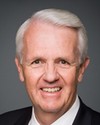Thanks very much.
Good morning, Mr. Chairman and members of the committee. Thank you for your invitation to speak on behalf of the First Nations Chiefs of Police Association, which I'II refer to as the FNCPA. Chief John Syrette, president of the association, was unable to attend and asked me to appear in his place.
I am Chief Doug Palson, chief of the Dakota Ojibway Police Service, the headquarters being located in Portage la Prairie, Manitoba. I'm also the vice-president of the FNCPA. My work with first nation communities began with the RCMP in The Pas, Manitoba, in summer 1987. In 1988 I joined the Brandon Police Service and was appointed chief of the Dakota Ojibway Police Service in 2008. I am of Métis descent.
The First Nations Chiefs of Police Association was incorporated in 1992. It brought together the chiefs of police of self-administered policing agreements that resulted from the 1991 cabinet approval of the first nations policing policy. The FNCPA held its first annual meeting in 1996.
The FNCPA works to advance self-administered first nations police services within Canada. Our mandate is to serve first nations police services and first nation territories across Canada by facilitating the highest level of professionalism and accountability in their police services, and in a manner that reflects the unique cultures, constitutional status, social circumstances, traditions, and aspirations of first nations.
The FNCPA holds an ex officio voting position on the board of directors of the Canadian Association of Chiefs of Police, and many of the first nations police executives are active members of the CACP committees. The FNCPA has been formally recognized by the Assembly of First Nations. Our total membership of 60 represents 38 stand-alone, self-administered first nations police services. We hold an annual conference where the business of the association is conducted and the membership is brought up to date on national, topical issues. One of these is the sustainability of first nations policing, which I'll address in more detail in a moment.
The work of the FNCPA covers eight areas of responsibility: effective policing on first nation territories; reflecting cultural, social, and constitutional diversity; accountability; training to meet the needs of first nations police services and communities; education of members and partners about the roles and functions of the first nations police services; provision of advice and expertise on issues of justice and public security to members, non-members, and governments; effective partnerships; and identifying and promoting best practices in first nations policing.
At our most recent annual conference held here in Ottawa two weeks ago, our members identified effective policing on first nation territories and partnerships as the two most pressing priorities.
Effective policing on first nation territories is a good lead-in to the current discussions on the economics of policing. We see a place for the first nations policing voice as part of these discussions because we have a keen understanding of the economics of first nations policing. In January of this year, in Ottawa, Public Safety Canada hosted the Summit on the Economics of Policing: Strengthening Canada's Policing Advantage. The Minister of Public Safety stated that the term “Economics of Policing” refers to “the evolution and sustainability of policing in a time of greater fiscal constraints and enhanced public expectations.”
The summit is described as one step in a long journey towards increasing efficiency and effectiveness of policing in Canada. Public Safety Canada has said that one planned outcome of the strategy, for ministers to consider, is to ensure that policing in Canada remains sustainable now and in the future. Although the FNCPA was not one of the associations that participated in the discussions that led to the summit, some individual first nations' chiefs of police did attend the event and we have been monitoring developments closely.
As an association, we are committed to efficient and effective policing that is sustainable now and into the future. We do not need to be convinced about the importance of the innovative approaches the Minister of Public Safety referred to when he called for “integrated efforts by multiple local agencies”. We do, however, recommend a reality check.
We have concerns about the availability and capacity of service agencies in the vulnerable and often remote communities served by first nations policing services. At a time when budgets for corrections are increasing, our communities find it more and more difficult to access federal crime prevention funding. We feel strongly that investing in prevention needs to be part of the discussion about the economics of policing. Front-end prevention is more cost-effective than corrective measures on the back end.
We also seek recognition of the constitutional relationship that sets out the responsibilities of both the federal and provincial governments toward first nations. The federal government has a fiduciary responsibility to be part of the solution to the economics of first nations policing.
Let me outline very briefly the history, context, and current situation of stand-alone, self-administered first nations police services that are funded under the first nations policing program. My intent is to convey the fundamental challenges that first nations police services face in providing a basic level of service. This is at a time when other police services are putting in place structural and administrative reforms and strategies to address cybercrime, national security, and terrorism threats, and in some cases deciding whether to purchase a helicopter.
The purpose of the first nations policing policy is to provide first nation and Inuit communities on reserve, crown land, or land set aside for their use, with access to police services that are professional, effective, culturally appropriate, and accountable to the communities they serve. The first nations policing program is intended to support the policy and to facilitate the transition to self-administered police services in communities that choose such a model. Successive evaluations and reviews, while pointing out challenges of uncertain and inadequate funding, the need for strengthening police governance, and other areas for improvement, have endorsed the principles of the first nations policing policy and confirmed the cost-effectiveness, clearance rates, and community satisfaction with the program.
As you are aware, Public Safety Canada administers the program, which has no statutory basis and is a discretionary federal transfer payment program. The cost of policing is shared by federal and provincial governments at 52% and 48% respectively.
Our association focuses on first nations policing through self-administered agreements that are part of the first nations policing program. Our association is unique in being able to speak on first nations' experiences with these agreements, which are intended to be negotiated among first nation or Inuit communities, provincial or territorial governments, and the federal government. The past 20 years of experience with self-administered agreements under the FNPP reveal the following issues that relate to the economics not only of policing but also of community safety, health, and well-being.
First of all, the lack of a legislative basis for first nations policing means that this innovative and proven policing model has a shaky existence and an uncertain future that is not good for first nation communities. First nations policing is seen by governments as an enhancement to the basic policing services provided by the province or territory, when in fact the self-administered police services are the de facto police service on the ground with enhancements coming from other policing services.
Funding levels are inadequate when compared with other policing services' budgets, particularly in light of the geographical and socio-economic conditions of many first nation communities. Standards for infrastructure, training, and general operations are imposed by governments, but there is often no funding for implementation and compliance. Comparisons of costs between first nations and other models must take into account the specific challenges of service delivery to first nation communities as well as community needs.
The limited funding within the program prevents communities that want a self-administered policing service from having one. Budgetary planning processes for first nations policing are not in accordance with the municipal, regional, provincial, or federal policing organizations. Civilian governance is required of first nations police services, but funding and educational resources have not been consistently provided by the federal government that set this condition.
Consultation among governments and first nation communities on levels of services required in the community does not take place in a meaningful way before policing agreements are signed, even though those agreements call for such consultation. Communities tend to be somewhat disenchanted with the process and feel that they are not respected.









